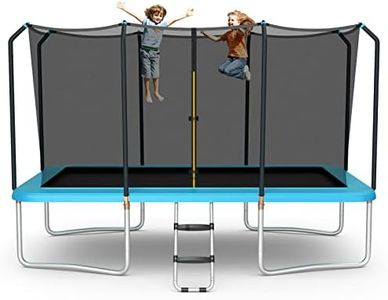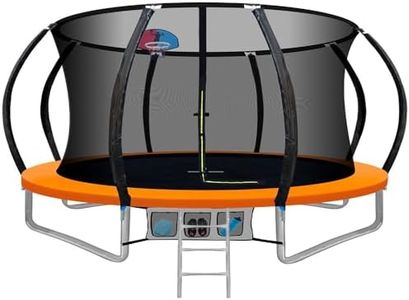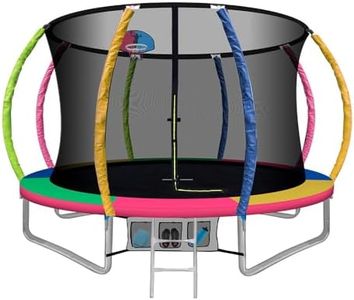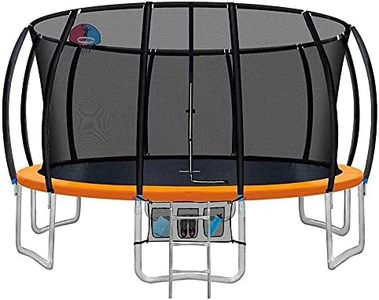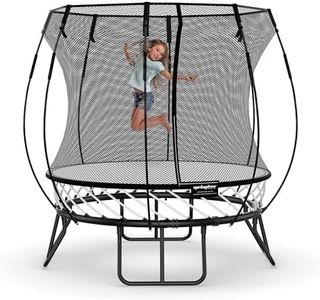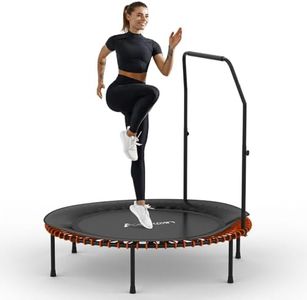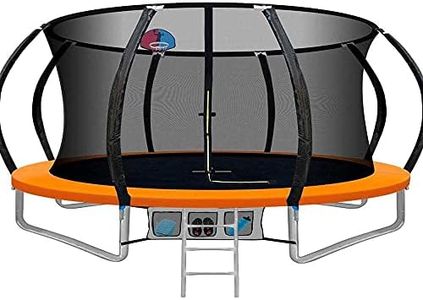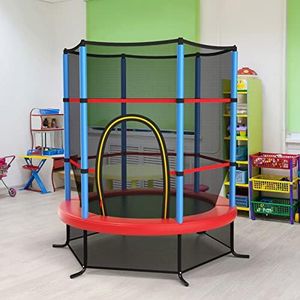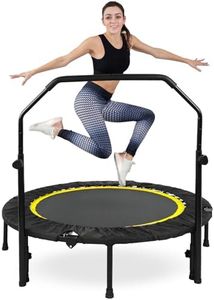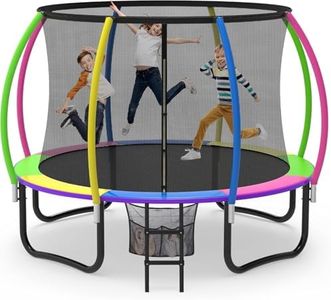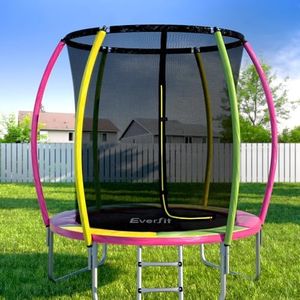We Use CookiesWe use cookies to enhance the security, performance,
functionality and for analytical and promotional activities. By continuing to browse this site you
are agreeing to our privacy policy
10 Best Outdoor Trampolines
From leading brands and best sellers available on the web.Buying Guide for the Best Outdoor Trampolines
Choosing the right outdoor trampoline can make a big difference in your overall satisfaction and safety. Trampolines come in many shapes, sizes, and constructions, which can affect performance, safety, and long-term enjoyment. Before making a decision, think about who will be using the trampoline, how much space you have, and what your main priorities are—such as fun, exercise, or family activities. Understanding the key features will help you select a trampoline that fits your needs and provides the best experience for everyone.SizeTrampoline size refers to the overall diameter (for round trampolines) or dimensions (for rectangular/square ones). Size impacts how much space you need in your yard, as well as how many people can use the trampoline at a time. Small trampolines (around 8-10 feet) are best for younger kids or small spaces, medium sizes (12-14 feet) work well for families with both children and adults, while large trampolines (15 feet or more) are ideal for multiple users or older teens who want more jumping space. Consider your yard space and the ages of users to find the best fit.
ShapeTrampolines come in various shapes like round, rectangular, oval, and square. The shape affects bounce quality and how the trampoline fits in your outdoor space. Round trampolines are the most common and tend to guide jumpers to the center, making them safer for general play. Rectangular trampolines offer stronger, more even bounce and are popular with gymnasts and athletes but take up more space. Oval and square trampolines combine some benefits of both. Choose the shape based on available space, user's experience level, and intended activities.
Weight CapacityWeight capacity is the maximum load a trampoline can safely handle, combining all users at once. It's important for both safety and durability. Lower weight capacities (under 200 pounds) are suitable for young children, while medium capacities (200-300 pounds) work for most families. Higher capacities (over 300 pounds) are necessary if adults or multiple kids will jump together. Always check this spec to match the number and types of users you expect.
Safety EnclosureA safety enclosure is the netting that surrounds the trampoline and prevents users from falling off. It is crucial for injury prevention, especially for young children or inexperienced jumpers. Some trampolines come with tall, tightly-woven enclosures, while others have lower or looser nets. Look for a sturdy enclosure with a secure entry point. If you have young children or plan for group play, prioritize trampolines with robust enclosures.
Frame Material and Build QualityThe frame is the skeleton of the trampoline and dictates its strength and lifespan. Most frames are made from galvanized steel to resist rust and weather damage. Thicker steel and sturdy joints mean greater stability and durability. If you live in an area with harsh weather or plan to leave the trampoline outside year-round, prioritize strong, weather-resistant frames. For lighter or temporary setups, thinner or painted steel might be adequate.
Spring or Springless DesignTrampolines use either metal springs or springless systems (like flexible rods) to provide bounce. Springs offer a classic feel and usually a stronger bounce, but can pinch or wear out. Springless designs are safer since they reduce gaps where users might get caught and often last longer, but may feel different to jump on. If safety or maintenance is a priority, springless might be preferable. For traditional bouncing and possibly lower cost, springs can be a good choice.
Jumping Mat MaterialThe mat is the surface you actually jump on, and its quality influences comfort, durability, and safety. Mats made of UV-resistant polypropylene or a similar material last longer and withstand outdoor conditions better. If the trampoline will be in direct sunlight, a UV-resistant mat helps avoid early deterioration and sagging. Check for reinforced stitching as well—if you expect heavy use, a tougher mat will hold up longer.
Assembly and MaintenanceAssembly describes how easy or complex it is to put the trampoline together, while maintenance reflects the effort required for upkeep. Models with clear instructions and few parts are simpler to set up. Some trampolines require regular tightening, cleaning, or covering. If you prefer minimal hassle, look for reviews or specs mentioning easy assembly and low maintenance—this is especially important if you have limited time or aren’t especially handy.
